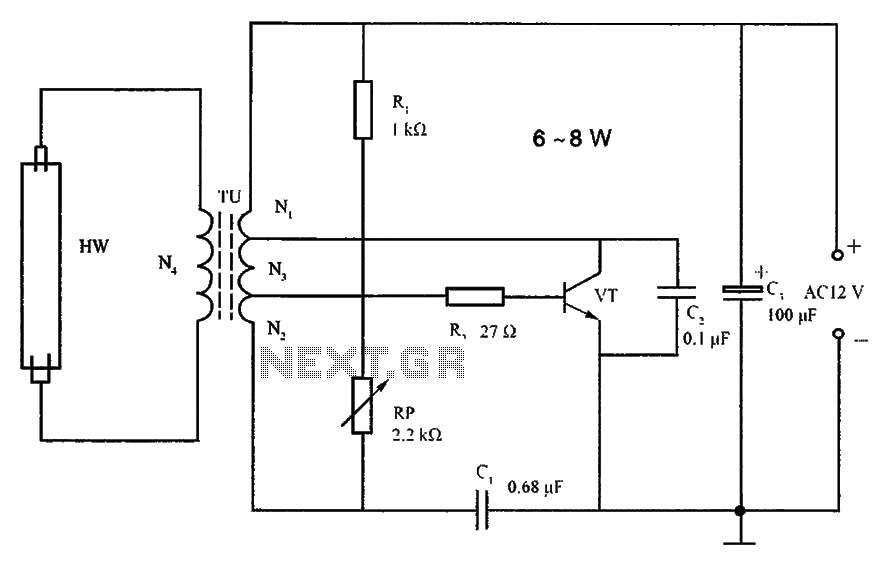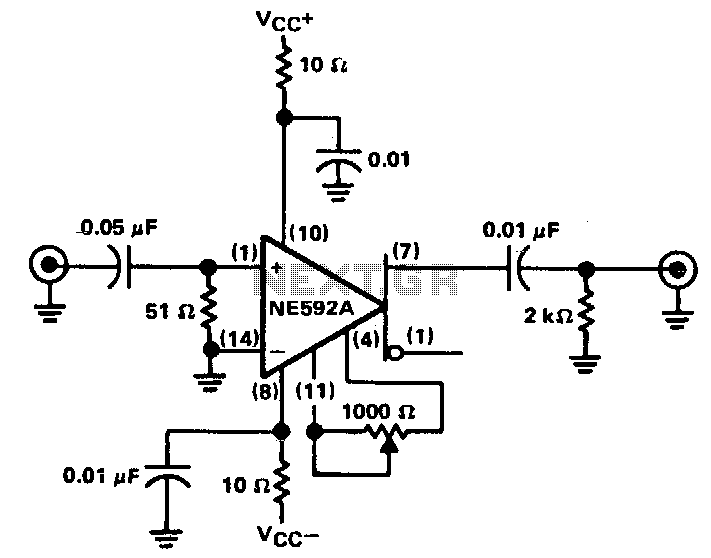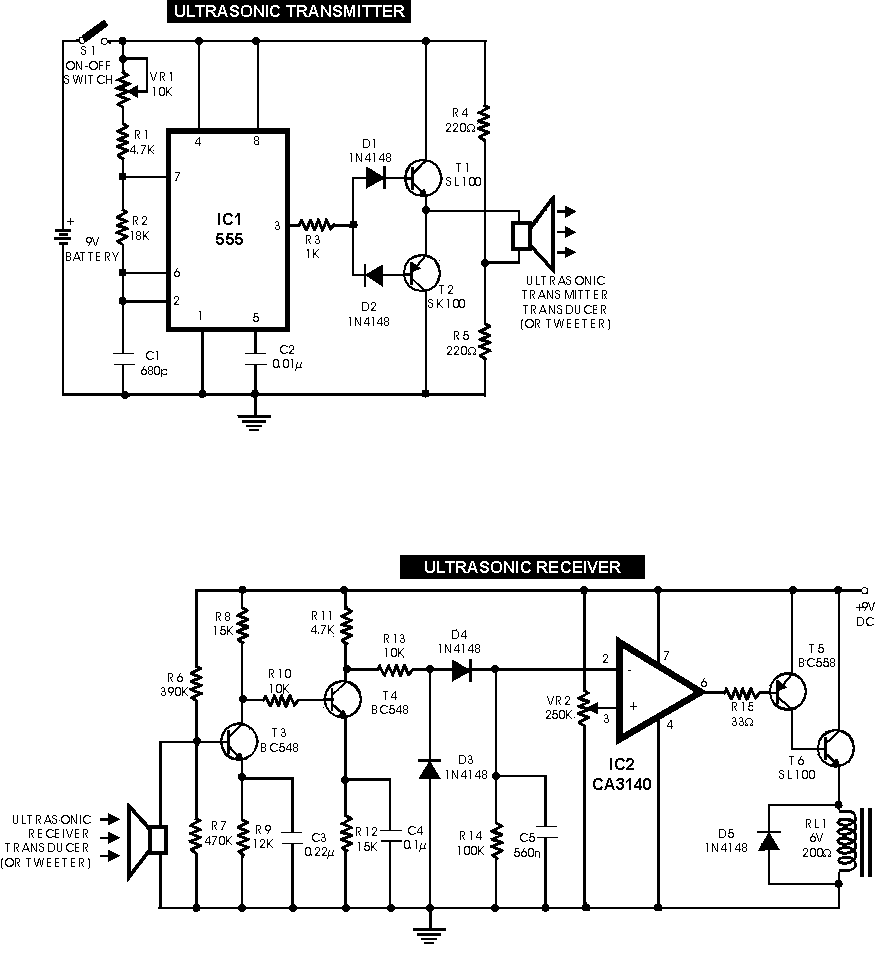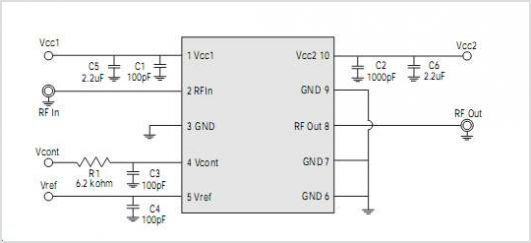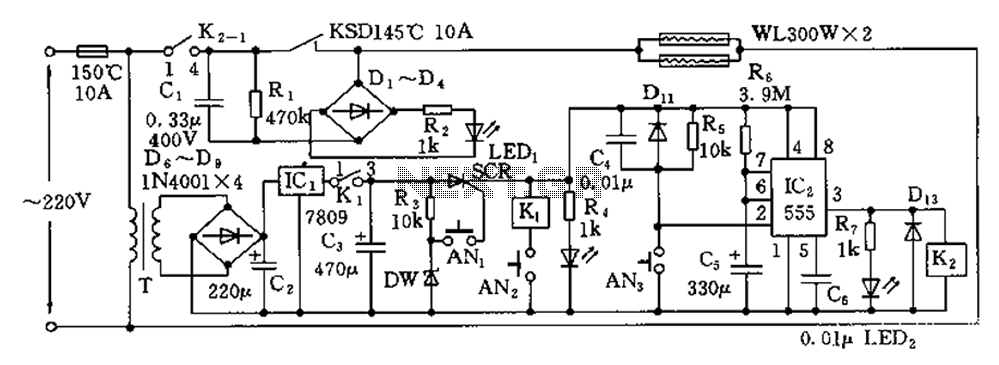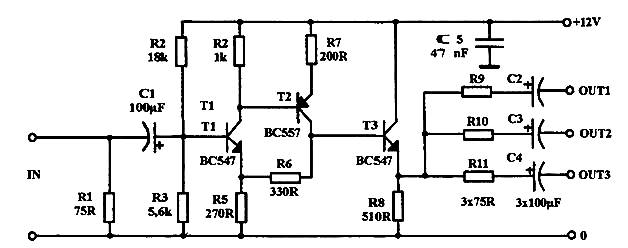
DC to 100W amplifier circuit diagram of 500KHZ
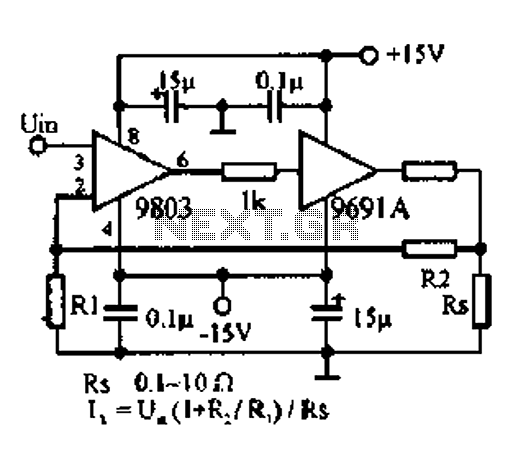
A 100W amplifier with a frequency range from DC to 500KHz features a photoelectric starting operational amplifier with high input impedance and high gain characteristics, enabling transformerless output power of 100W. The load current can reach up to 10A, necessitating wiring that accommodates high current and power supply bypass capacitors. This circuit is suitable for high-fidelity audio applications, cathode-ray deflection systems, and servo systems.
The described amplifier circuit employs a photoelectric starting operational amplifier, which is essential for achieving high input impedance and gain. This characteristic is particularly beneficial for applications requiring minimal signal distortion, such as in high-fidelity audio systems. The operational amplifier's design allows for transformerless output, which simplifies the circuit architecture and enhances efficiency by eliminating the need for bulky transformers that can introduce additional noise and signal loss.
The amplifier is capable of delivering up to 100W of output power, with a load current capacity of 10A. This necessitates careful consideration of the wiring layout to ensure it can handle the high current without overheating or introducing resistive losses. The use of appropriate gauge wires is critical to maintaining performance and reliability in high-power applications.
To support the high current demands, the circuit requires the inclusion of power supply bypass capacitors. These capacitors serve to stabilize the power supply, reducing voltage fluctuations and ensuring that the amplifier operates smoothly under varying load conditions. The selection of bypass capacitors should be made based on their voltage rating and capacitance value to effectively filter out noise and provide a stable power source.
In addition to audio applications, this amplifier circuit can be utilized in cathode-ray deflection systems, where precise control of electron beams is necessary for image rendering. The high gain characteristics of the operational amplifier allow for fine adjustments in beam positioning, contributing to improved image quality.
Furthermore, in servo systems, the amplifier's ability to provide substantial output power and precise control can be leveraged for applications such as motor control and positioning systems. The design's versatility makes it suitable for various applications that demand high performance and reliability in signal amplification.DC to 500KHz of 100W amplifier photoelectric starting op amp high input impedance, high gain characteristics, to achieve transformerless output power 100W. Load current up to 1 0A, the wiring requirements for high current and high power supply bypass capacitors. This circuit is used for high-fidelity audio circuits, cathode-ray deflection and a servo system.
The described amplifier circuit employs a photoelectric starting operational amplifier, which is essential for achieving high input impedance and gain. This characteristic is particularly beneficial for applications requiring minimal signal distortion, such as in high-fidelity audio systems. The operational amplifier's design allows for transformerless output, which simplifies the circuit architecture and enhances efficiency by eliminating the need for bulky transformers that can introduce additional noise and signal loss.
The amplifier is capable of delivering up to 100W of output power, with a load current capacity of 10A. This necessitates careful consideration of the wiring layout to ensure it can handle the high current without overheating or introducing resistive losses. The use of appropriate gauge wires is critical to maintaining performance and reliability in high-power applications.
To support the high current demands, the circuit requires the inclusion of power supply bypass capacitors. These capacitors serve to stabilize the power supply, reducing voltage fluctuations and ensuring that the amplifier operates smoothly under varying load conditions. The selection of bypass capacitors should be made based on their voltage rating and capacitance value to effectively filter out noise and provide a stable power source.
In addition to audio applications, this amplifier circuit can be utilized in cathode-ray deflection systems, where precise control of electron beams is necessary for image rendering. The high gain characteristics of the operational amplifier allow for fine adjustments in beam positioning, contributing to improved image quality.
Furthermore, in servo systems, the amplifier's ability to provide substantial output power and precise control can be leveraged for applications such as motor control and positioning systems. The design's versatility makes it suitable for various applications that demand high performance and reliability in signal amplification.DC to 500KHz of 100W amplifier photoelectric starting op amp high input impedance, high gain characteristics, to achieve transformerless output power 100W. Load current up to 1 0A, the wiring requirements for high current and high power supply bypass capacitors. This circuit is used for high-fidelity audio circuits, cathode-ray deflection and a servo system.
